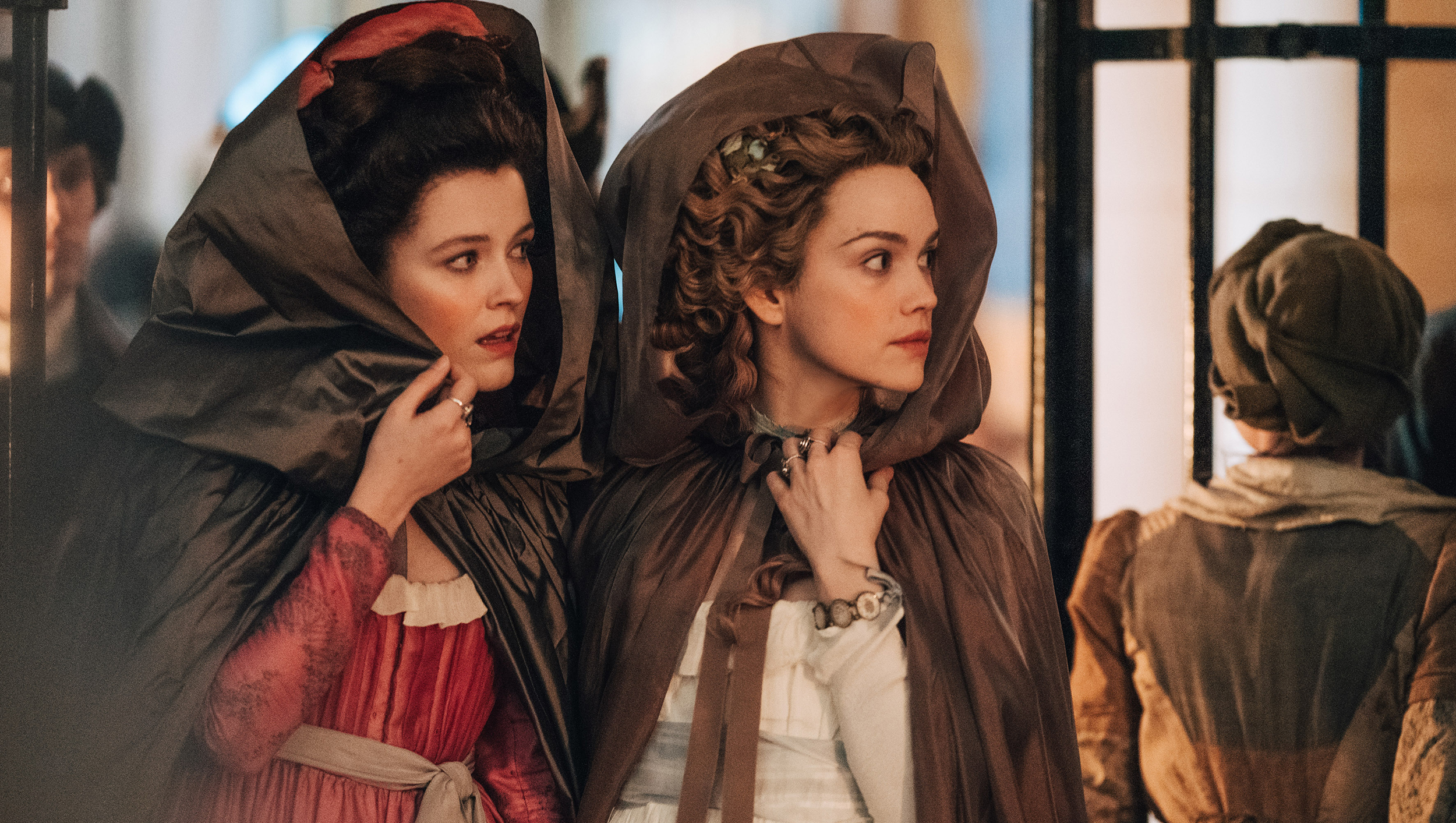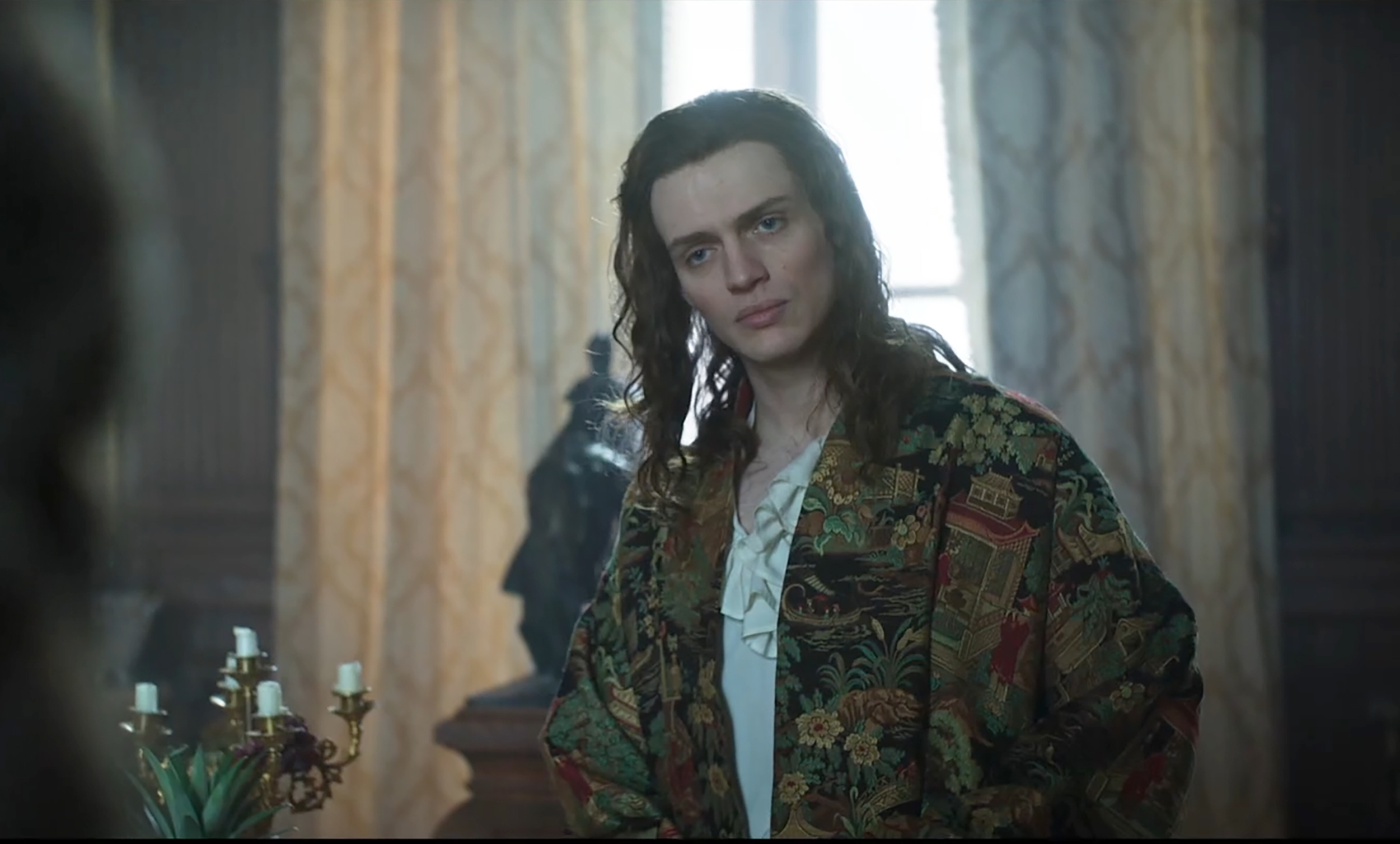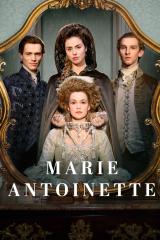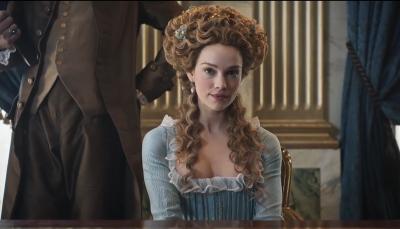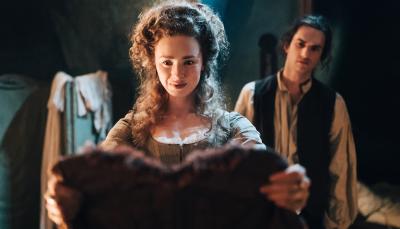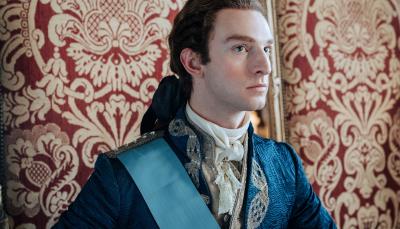Haute Outerwear Steals the Show in 'Marie Antoinette’s Mid-Season
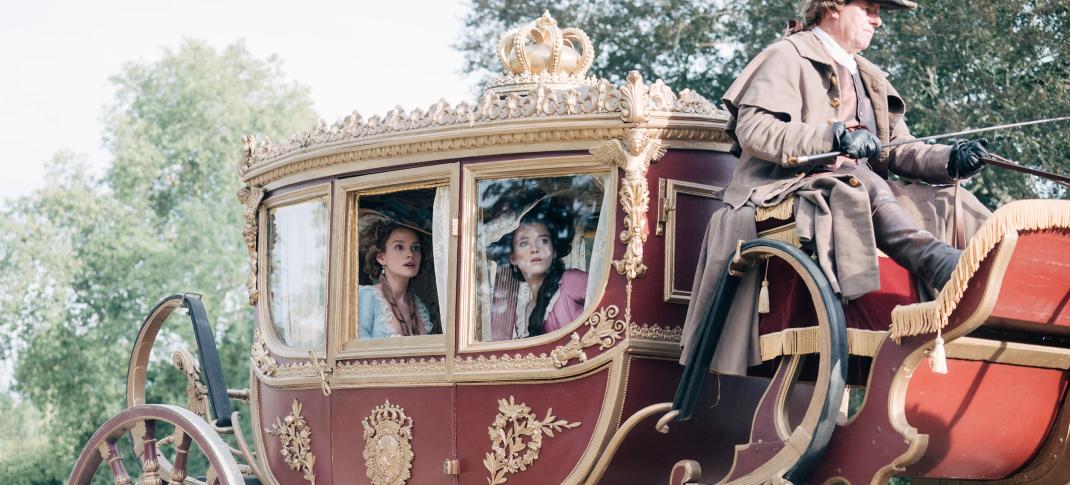
Emilia Schüle as Marie Antoinette and Liah O'Prey as Yolande in 'Marie Antoinette' Season 2
Caroline Dubois/Capa Drama/Canal+
Welcome to the mid-season report on the best costumes for Marie Antoinette’s second season. Personal and political machinations from just about every character continue to unfold, including the Queen’s public image, marriage, and extra-marital relationship; the fortunes of various publicly loyal but privately threatening courtiers; and of course, the monarchy’s massive secret debt. For this set of three midseason episodes, the standout pieces are all coverings of some kind.
I was very taken with two tailcoats, two capes, and one incredibly louche dressing gown, three styles of garment that can claim to be somewhat democratic when made out of fibers like wool, cotton, or linen, and the height of unattainable luxury when rendered in silk.
Episode 3, “Treacherous Legacy,” dazzled me with two coats worn by the scheming Duc d’Orléans (Oscar Lesage). I love how scheme-rich Marie Antoinette is as a whole; everyone is always working at an angle and is ready to pivot to a new angle the moment it becomes necessary. The men’s tailcoat coats of this era are about knee-length, with stand collars and the illusion of wide lapels formed by embellishments along the button band. The embellishments are often a combination of beading and embroidery and are also featured on pocket flaps and the jacket’s cuffs.
The first stunner to appear is the deep gunmetal gray number he puts on for a bit of public reconciliation with King Louis XVI following Orléans’s father’s death and his own ascendance to the duchy. The beading on this coat is so lavish that it must account for at least 10% of the garment’s total weight. It extends all the way from the button band to the arm holes and is mostly tone-on-tone, offering the same shade of rich gray as the main fabric but with a bit of extra shine.
Dark green and a bit of silver round out the color palette. It’s a densely packed riot of botanical elements, but the most striking visual motif looks like stalks of wheat. It strikes me as being in the same vein as Le Petit Trianon, where Marie Antoinette got to play-act at being a simple woman of the country. Similarly, what Orléans doesn’t know about crops could just about squeeze into Notre Dame, but it looks great.
Coat of Many Subtle Colors
My pick for Best in Episode, though, is the coat he wears to confront Marie-Antoinette at her new private retreat of St-Cloud, an estate that used to be in his family. He wears a Coat of Many Subtle Colors, built around the main fabric, a supersaturated, rich shade of purple. Close up, it looks like it might include an unexpected jacquard pattern, but it’s a feature that isn’t particularly notable at a normal TV viewing distance. The silk embroidery and likely glass beading – in silver, lavender, mauve, and very pale green – show anemones in three stages of blooming.
The lavender flowers are in full bloom, silvery gray blossoms are partially open, and the rosy mauve ones are still furled. It’s a lovely way to create extra visual interest, reflecting the blooming pattern of real flowering plants. Between the anemones and the button band, there are beautiful sprays of tiny white flowers in bud atop delicate green stalks. I don’t recognize this flower, so if you do, please let me know what it is! It looks a bit like Queen Anne’s lace, but I think it’s something else.
Capes Of The Century
Episode 4, “The Pursuit of Happiness,” finds the Queen and her bestie, Yolande, sneaking out of Versailles to move anonymously among the people. Sure! They can be stealthy! What’s giving them away? Oh, only everything about them, from their hair, gowns, accents, and capes. If there is an outerwear heaven (and I sincerely hope there is because coats, jackets, and capes are underappreciated workhorses of our wardrobes), these Capes Of The Century surely are there. They are floor-length and massively wide, accommodating the volume of the gowns’ skirts.
The lovely, flowing drape and width flexibility are accomplished through the use of gathers connecting the body to the hood and what looks like many knife pleats in the front. Those hoods are enormous, too, necessary for shielding the big hair of the era from the elements. As a bonus, the hoods can be drawn partially across the wearer’s face as an impromptu and wholly inadequate disguise. Yes, Toinette, Orléans recognized you at the bawdy theatrical spoofing your scandalous first royal portrait!
The aspect of these capes I will be thinking about for months is the fabric they’re made of. Largely on the basis of this explanation from Mood Fabrics, I believe it’s silk organza, which would line up with the imperative to support the French silk industry, especially after the catastrophe of the aforementioned first royal portrait, in which the Queen’s gown was shocking both for its informality and its fiber content. The Queen of France? In (likely American) cotton? In that economy? Madame!!
The shades of these capes shift with the different types of light striking them. In silvery moonlight, they seem gray, while in the glow of a candlelight, they’re almost golden. In daylight, they appear as a deep gray-toned mauve or even a soft fawn. What a spectacular way to maximize the dramatic effect of this very special fabric’s equally special property.
Let Them Eat Loungewear
Episode 5, “Enemies Assemble,” isn’t nearly as sartorially thrilling as its predecessors, but it does include an extended scene featuring the Duc d’Orléans’s remarkable dressing gown. As series costume designer Marie Fremont told me, she was inspired by the decor at the “18th-century private residence just outside Paris” where scenes in his apartment were shot. The “magnificent Chinese lacquers of the time” caught her eye, leading to the creation of a robe – let’s call it Let Them Eat Loungewear, that would look as chic in a contemporary fellow’s wardrobe as it does in the series.
The robe is somewhat in conversation with the capes in the previous episode, voluminous and somewhat cocoon-like. This time, the fabric is a black silk brocade with contrasting floral, arboreal, architectural, and sea-going motifs in shades of green, yellow, and red. The yardage alone would have been luxurious; Orléans choosing to use so much silk for a single garment that never left the house should give everyone pause.
Marie Antoinette Season 2 airs Sundays on most local PBS stations, the PBS App, and the PBS Masterpiece Prime Video Channel at 10 p.m. ET. All eight episodes of the new series are available on PBS Passport for members to stream. Season 1 is available to stream for members on PBS Passport and on the Prime Video Masterpiece Channel.



